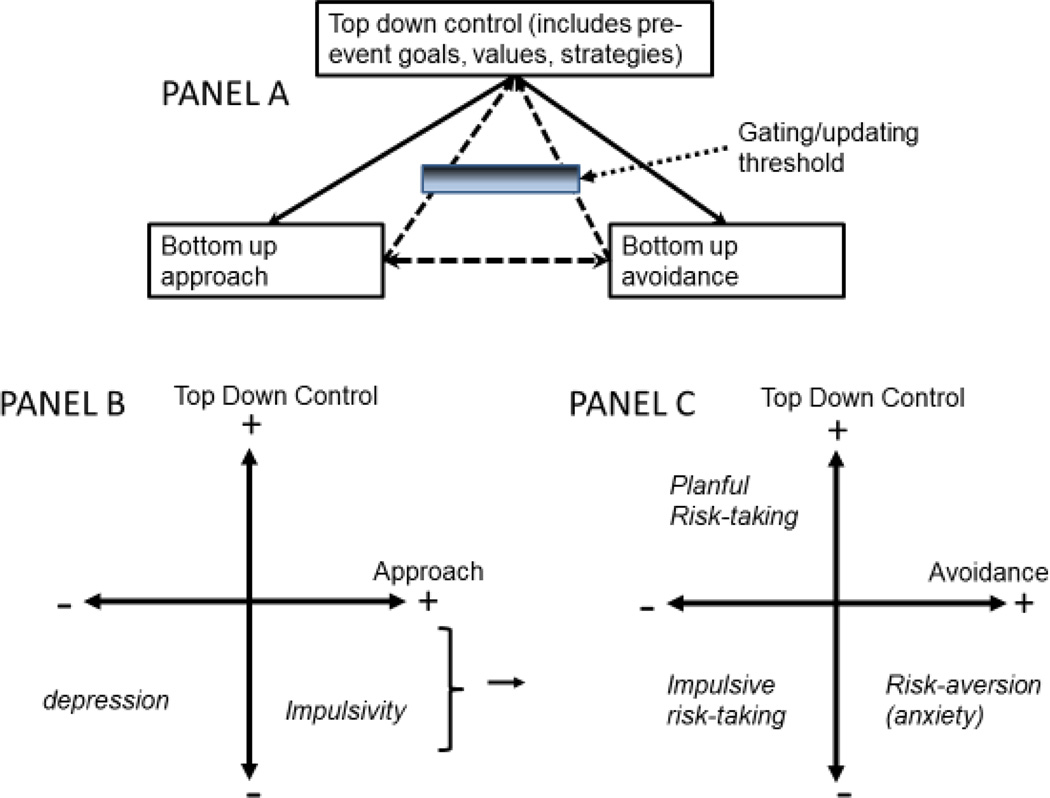Figure 3.
Tripartite model: Figure illustrates the integration of a top-down and bottom-up processes within a model from the psychobiology of personality that parallels what is seen in the cognitive neuroscience and developmental literature. Panel A: The fundamental tripartite conception. The bidirectional arrows indicate that the two bottom-up systems are mutually regulating, and that both are regulated by top-down control. At the same time, via gating and cybernetic checking mechanisms, the bottom-up processes also regulate the level of top-down control. Panel B: The interplay of top-down SR and bottom-up approach response creates opportunities for both depression (low top-down capacity and low bottom-up motivation), and for impulsivity (low top-down control with high bottom-up motivation). Panel C: The interplay of top-down SR processes and bottom-up avoidance response (fear/anxiety). Their interplay creates opportunity for anxiety (when avoidance is high and top-down regulatory capacity is low) and impulsive risk taking (when avoidance is low, top-down control is low, and approach is also elevated—thus the arrow from panel A’s lower right quadrant). Panel A is based on material in Carver, Johnson & Joorman, (2009), Hofmann, Friese, & Strack, (2009), Gray (1982), Verbruggen et al (2014) and other sources they cite. Panel B and Panel C are based on material in Nigg (2006) and other sources cited therein.

